August 2, 2025 | 05:05 GMT +7
August 2, 2025 | 05:05 GMT +7
Hotline: 0913.378.918
August 2, 2025 | 05:05 GMT +7
Hotline: 0913.378.918
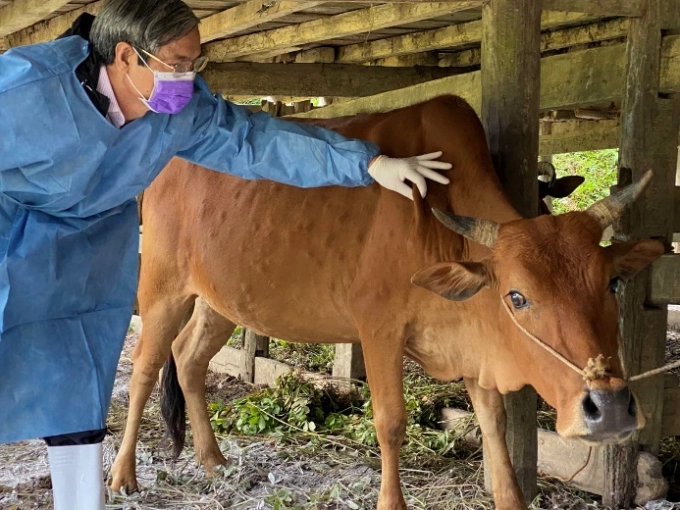
A leader of the Department of Animal Health (DAH) is taking samples from a cow a suspected outbreak of LSD in Huu Lung District, Lang Son Province. Photo: DAH.
The infectious Lumpy Skin Disease (LSD) which has appeared in many Asian countries, is now at a high risk of threatening cattle herbs of Vietnam.
In the past few years, LSD has spread rapidly from country to country, especially in some Chinese provinces just about 200 km from the border with Vietnam
Thus, the risk of spreading the disease from China into Vietnam is very high, the Department of Animal Health (DAH) has warned.
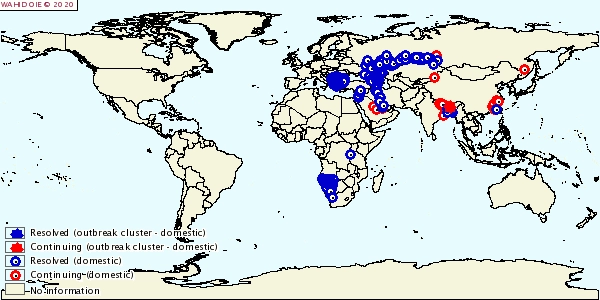
A map of LSD distribution in Asia, from January 1, 2014, to July 29, 2020 (year of appearance). Source: DAH.
Currently, the trade, transportation, and consumption of illegally imported buffaloes, cows and other related products with unknown origin, still occurs a lot, especially in the northern border provinces.
The number of tourists traveling from other countries via land, air, and sea routes to Vietnam is very large, especially those from Asian countries who often have the habit of bringing foods containing buffalo and beef meat.
These are among the ways for the disease to be spread through the country, according to the
A report from the DAH said the LSD is an infectious disease caused by a virus of the Poxviridae family.
The Virus can be spreading and cause infection on cattle but not humans, it said.
It can be transmitted mainly through bites of insects such as mosquitoes, flies, and ticks. Besides, it can also be infected during transportation or using the same drinking troughs in the feeding areas.
The virus is found in water, milk, and semen of the infected cattle, and easy to spread to others through direct contacts.
LSD often appear seasonally and mainly in warm months, when insects are most active and become plentiful, causing loss to productivity due to a sharp decline in cattle milk production.
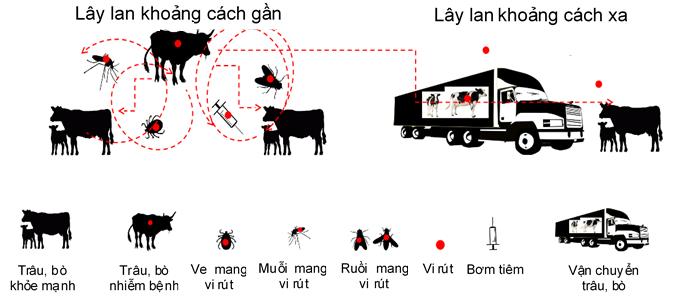
The disease is easily spreading in many different ways. Graphics: DAH.
The disease also causes infertility, miscarriage, skin damage, loss of weight. Infected cattle can die resulting in economic losses for the breeders due to limited transportation and trading.
Viruses can be destroyed at a temperature of 55 Celcius degrees in 2 hours and 65 degrees C in 30 minutes.
However, they can be recovered from skin nodules kept at -80 degrees C for 10 years and infected tissue culture fluid stored at 4 degrees C for 6 months.
Chemicals used to kill the virus include ether (20%), chloroform, formalin (1%), phenol (2% for 15 minutes), sodium hypochlorite (2 - 3%), compounds of iodine (phase dilute 1:33), Virkon (2%), quaternary ammonium compounds (0.5%) and some detergents such as sodium dodecyl sulfate.
Buffaloes and cows infected with the disease usually have the following signs: high fever of possibly over 41 degrees Celsius, refusing to eat, and weakness.
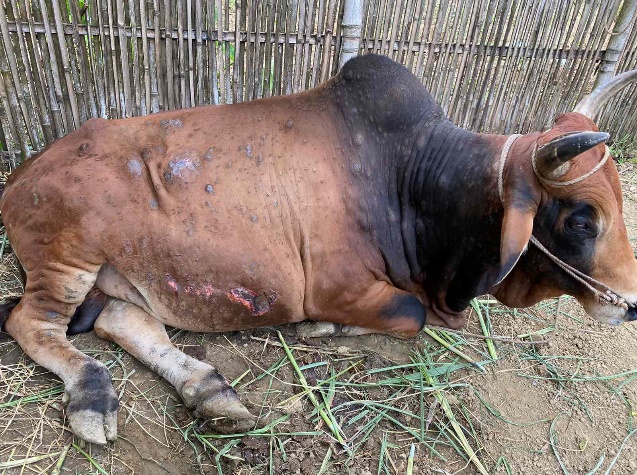
Scales, ulcers, and scars appear on the skin of an infected cow. Photo: DAH.
Infected lactating cattle suffer a significant decrease at the same time with rhinitis, conjunctivitis, saliva production, and swollen superficial lymph nodes including the pre-shoulder and posterior lymph nodes.
There will appear nodules of 2-5 cm diameter, especially in the scalp, neck, legs, breasts, genitals, and perineum within 48 hours of the onset of fever reaction.
These nodules are round, firm, and emerged over the skin, subcutaneous tissue and sometimes underlying muscles.
Large nodules may become necrotic and eventually fibrosis and persist for several months leaving scars that can be lasted forever.
Blisters, necrotic lesions, and ulcer sores can appear on the mucous membranes of the mouth and gastrointestinal tract as well as in the trachea and lungs.
Legs and other body parts of the abdomen, such as the holster, brisket, scrotum and vulva, can become exudating, preventing the animal from moving.
Bulls can be infertile either permanently or temporarily. A pregnant cow can suffer from miscarriage and in heat for several months.
The rate of infected buffaloes and cows is about 10-20% and the death rate is about 1 - 5%. The average incubation period is about 4-14 days.
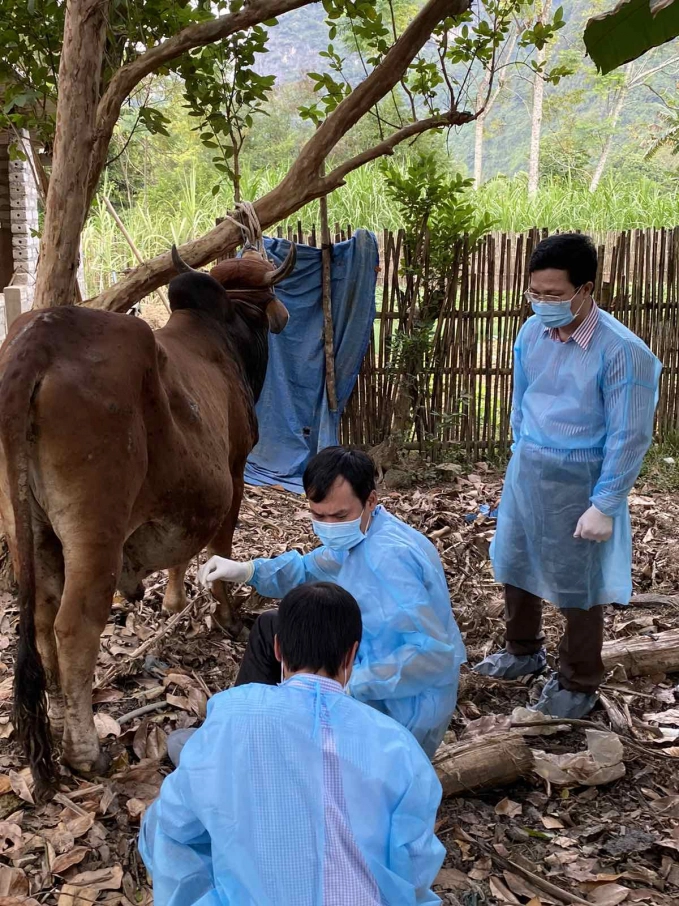
Officials from the DAH are examining and take samples from a cow in the suspected outbreaks in Lang Son Province. Photo: DAH.
The virus can be found in the blood between 7 - 21 days after infection.
Excretion of the virus in the semen can last up to 42 days.
There is also evidence about virus transmission via the placenta. In some cases, the carrier animal shows no clinical symptoms, but has the virus in the bloodstream and can transmit to healthy animals through blood-sucking insects.
LSD was first discovered and described in Zambia in 1929, after that, the disease has spread and circulated throughout almost every continent.
To date, the disease is a local epidemic in most African countries.
Author: Le Ben. Translated by Phuong Linh. Edited by Duc Huy.

(VAN) Vietnam and Japan are strengthening cooperation in disaster preparedness, with a new initiative focusing on integrating artificial intelligence (AI) into typhoon and flood warning systems.

(VAN) Prime Minister Pham Minh Chinh and Malaysian Prime Minister Anwar Ibrahim discussed the early signing of rice trade agreement for Vietnam to support Malaysia's food security.

(VAN) At the July 31 meeting on CITES, Vietnam proposed legal reforms and expanded cooperation to effectively address transnational wildlife trafficking crimes.
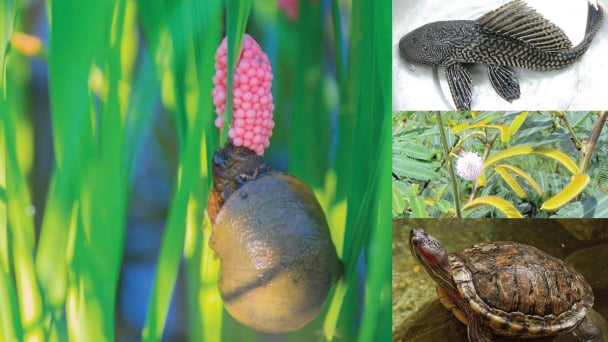
(VAN) Vietnam views management of invasive alien species as a pressing task, aimed at protecting biodiversity and local livelihood security.

(VAN) On July 30, the Phu Tho Provincial Women's Union, in collaboration with Oxfam, organized a workshop to summarize the 2024 Project on Post-Typhoon Yagi Recovery.

(VAN) UNICEF, in coordination with the Ministry of Agriculture and Environment, provided timely clean water support to residents in Son La and Nghe An affected by Typhoon Wipha.
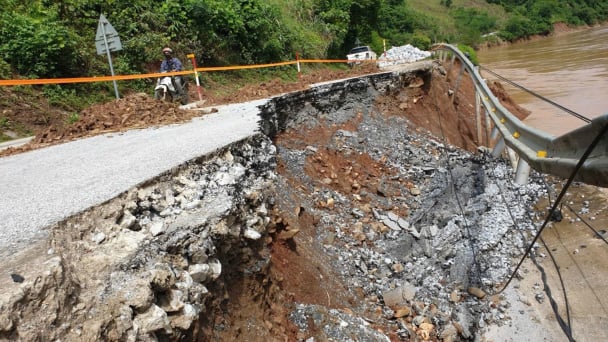
(VAN) According to Standing Office of the Steering Committee for Disaster Prevention, Search and Rescue, and Civil Defense of Nghe An, the province has incurred flood-related damages totaling nearly 3.4 trillion VND.